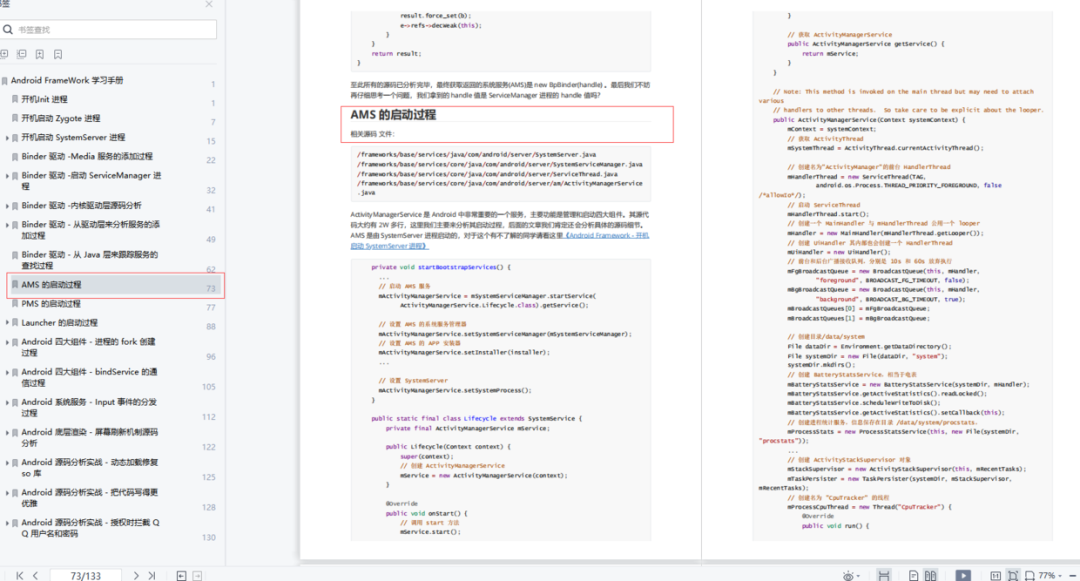Today's mobile applications have become an integral part of people's lives, and the Android platform is also one of the most popular mobile operating systems. However, due to the openness and diversity of the Android platform, developers need to pay special attention to application performance issues. This article will introduce some Android performance optimization methods to help developers improve application performance.

1. Start optimization
Startup optimization refers to shortening the startup time of the application and enhancing the user experience of the application by optimizing the code and resources when the Android application is loaded for the first time. Since the application loads many resources during startup, such as layout files, class libraries, XML files, etc., the loading of these resources may cause a long startup time.
To avoid this, we need to apply startup optimization techniques. In Android development, startup optimization technology includes the following aspects:
1. Reduce the package size of the application : The size of the application has a large impact on its startup time. Therefore, reducing the packet size is an effective startup optimization technique. For example, useless resources in the application can be reduced, useless classes and methods can be deleted, and so on.
2. Reduce the number and size of resource files : the application program contains many resource files, and the size and number of these resource files also have a great impact on the startup time of the application program. Therefore, reducing the number and size of resource files can improve application startup speed.
3. Lazy loading and asynchronous loading : It is not necessary to load all resources immediately when the application starts, and lazy loading and asynchronous loading can be implemented as needed. For example, large amounts of data such as lists can be loaded after the application starts.
4. Use an appropriate startup mode : Android provides a variety of startup modes, and choosing an appropriate startup mode can avoid the problem of repeatedly creating an Activity, thereby greatly improving the startup speed of the application. For example, startup modes such as "singleTask" and "singleInstance" can avoid the problem of creating multiple Activity instances.
5. Use cache : Some resource files can be cached for faster startup next time. For example, you can use SharedPreferences to save application configuration information, which can avoid reloading on each startup.
Startup optimization is one of the important means to improve the performance of Android applications. By optimizing the package size of the application, the number and size of resource files, loading time, etc., the startup speed of the application can be greatly improved and a better user experience can be brought.
2. Memory optimization
Memory management is an important issue in Android development. When an application uses more memory than is available on the device, it may cause the application to crash or run slowly. Therefore, developers need to pay attention to memory usage and reduce memory usage as much as possible.
Among them, some feasible methods include :
1. Use a memory analysis tool, such as the Memory Profiler that comes with Android Studio, to analyze the memory usage of the application, find out the cause of the memory leak, and repair it in time.
2. Avoid using static variables or singleton patterns as they exist throughout the application life cycle and may take up a lot of memory.
3. Timely release objects or resources that are no longer needed to avoid memory leaks.
4. Optimize layout files, reduce layout file nesting, and avoid unnecessary creation and destruction of View objects.
3. Optimize UI rendering
UI rendering is one of the key factors of Android application performance. Developers need to pay attention to the efficiency of UI rendering to ensure the smoothness of the application.
Among them, some feasible methods include :
1. Reduce layout nesting : When the nesting of android-style layout reaches a certain level, it will greatly increase the time-consuming of UI drawing. The optimization solutions that can be done include: reducing the nesting level of View, using the caching mechanism of LayoutParams, etc.
2. Use pre-rendered bitmaps : For heavily used UI layout resources, we recommend using bitmaps with better preview performance for these resources. For example, you can use View's drawToBitmap() method to render all subviews to a bitmap and then display them. Thereby improving rendering efficiency.
3. Use RecyclerView instead of ListView : Using the excellent RecyclerView control instead can greatly improve the step size and sliding speed of the list, because it can redraw more efficiently and orderly for data sets and touch input.
4. Network optimization
Network optimization is one of the common operations in Android applications. To improve application performance, developers need to pay attention to the efficiency of network requests.
Among them, some feasible methods include:
- Use a caching mechanism to reduce the number of network requests.
- Use asynchronous tasks or thread pools to execute network requests in background threads to avoid blocking the UI thread.
- Use the HTTP connection pool to reduce the establishment and destruction of connections and improve the efficiency of network requests.
- Use GZIP compression to reduce the amount of data transmission and improve the efficiency of network requests.
5. Optimize database operation
Database operation is one of the common operations in Android applications. To improve application performance, developers need to pay attention to the efficiency of database operations.
Among them, some feasible methods include:
- Use transactions to combine multiple database operations into one, reducing the number of database operations.
- Use indexes to speed up queries.
- Close the Cursor object in time to avoid memory leaks.
- Use a lightweight database such as SQLite to reduce the database footprint.
6. Other optimization suggestions
1. Manually manage and adjust the thread priority by yourself, otherwise it will cause unnecessary crashes in our application.
2. Reduce the use and nesting of WebView and other WebViews. The Android system itself has optimized the application of WebView, but it still needs to be used with caution, because the long-term occupation of WebView will lead to blocking of UI rendering.
3. Upgrade the technology version used, for example, Kotlin can be used instead of Java and other technologies to improve efficiency.
epilogue
Optimizing the performance of Android applications involves several aspects. When developing an application, you should pay attention to the startup speed, memory usage, UI rendering speed and other aspects of the application. The goal is to make the application faster, smoother, and more reliable. The optimization suggestions listed above are just some of them, and there are many ways to help you optimize the performance of your application.
With the gradual maturity of the mobile Internet market, the market has begun to have higher and higher requirements for the performance of APP applications. Many companies have made performance optimization a must-have skill for every Android developer, and they often ask questions during interviews. Mention related questions to test the technical level of the interviewer. It would be a pity to overturn here.
There are also some developers who encounter optimization-related problems in the project. In order to solve them quickly, they like to search for other people's solutions on the Internet and apply them. However, they can only solve temporary problems and cannot guarantee what problems will arise later. This shows that you are not proficient in performance optimization.
In order to help you better understand performance optimization in a comprehensive and clear way, we have prepared relevant learning routes and core notes (returning the underlying logic): https://qr18.cn/FVlo89You can learn for reference:
Performance optimization core notes:https://qr18.cn/FVlo89
Startup optimization
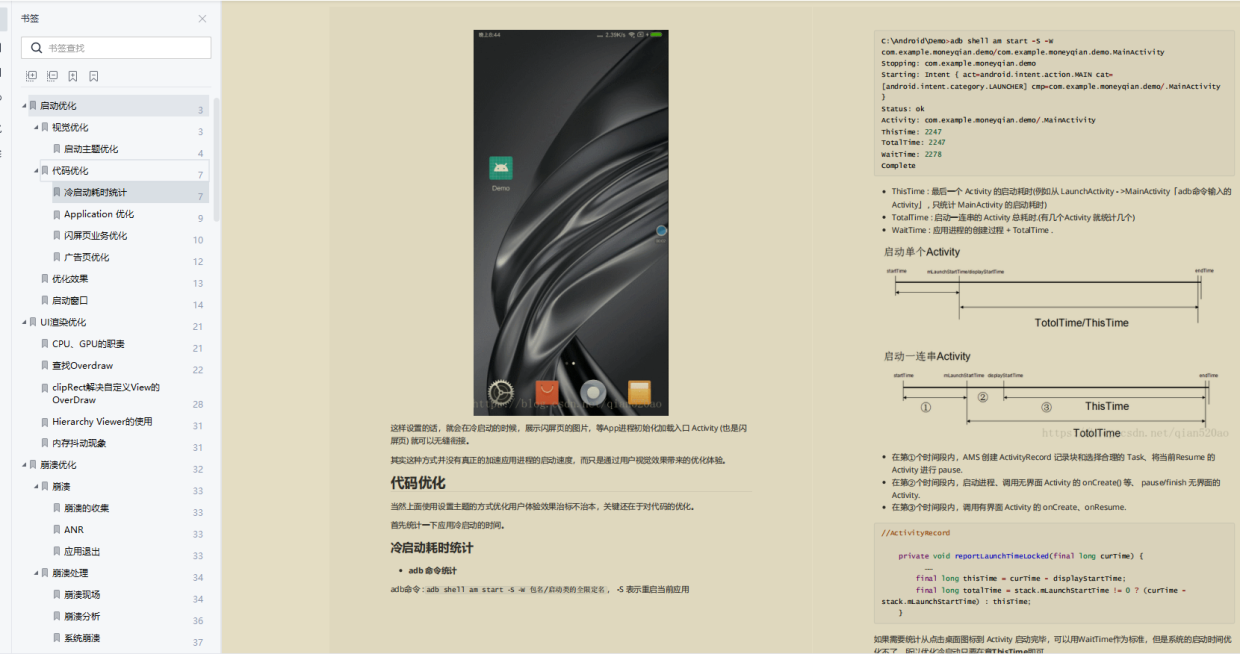
Memory optimization

UI
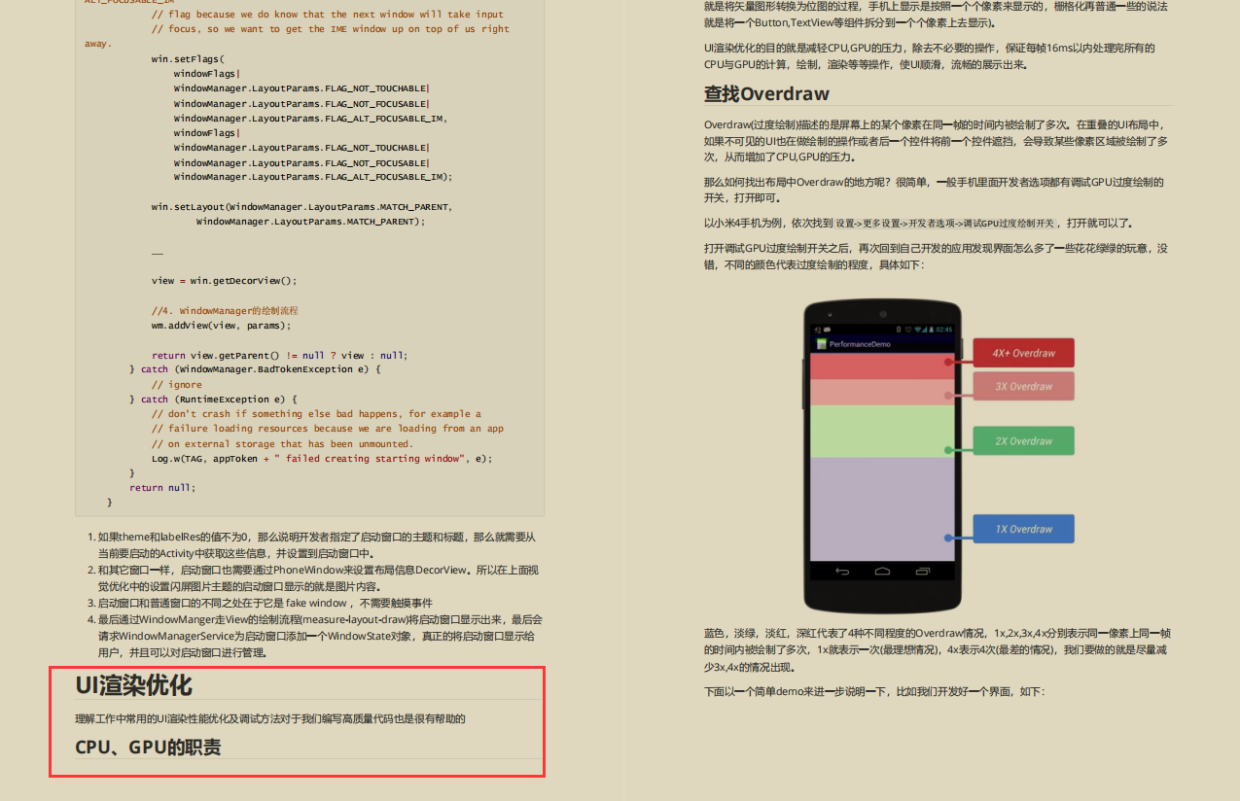
optimization Network optimization
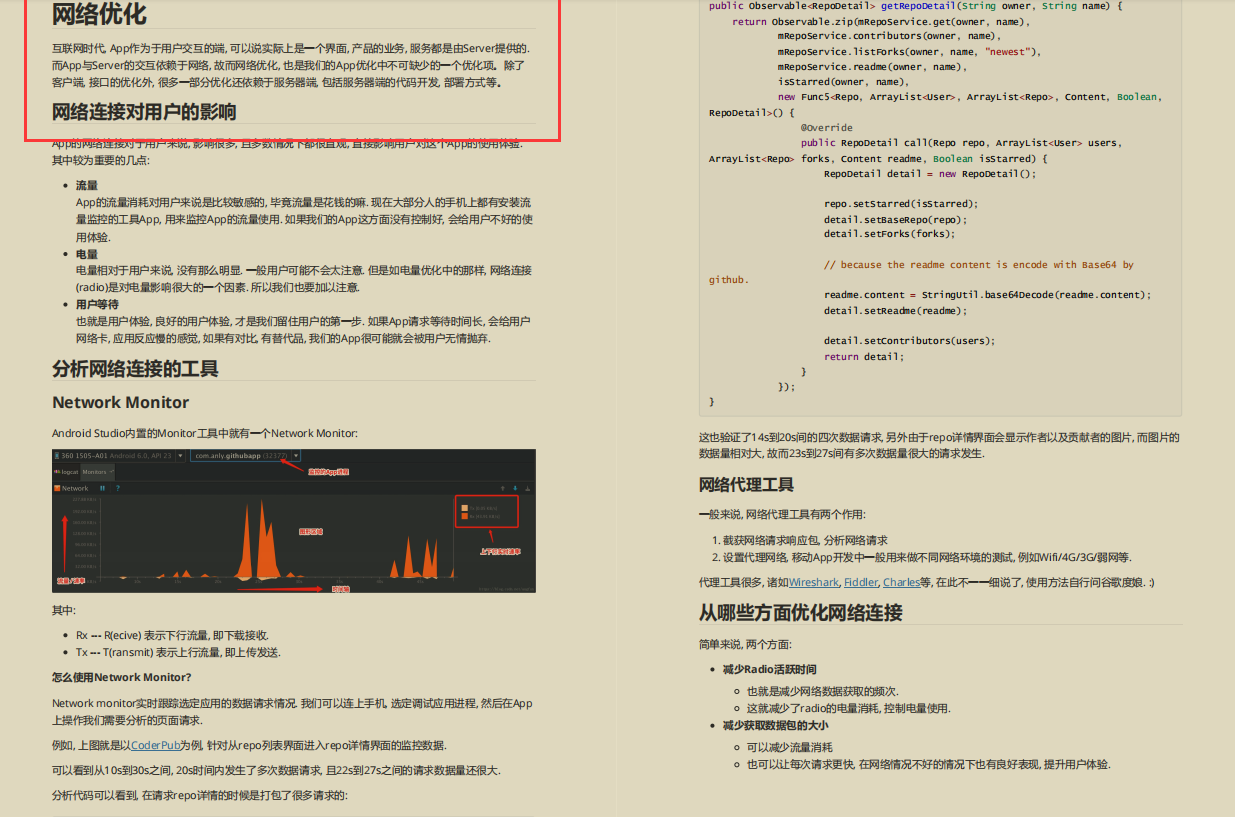
Bitmap optimization and image compression optimization : Multi-thread concurrency optimization and data transmission efficiency optimization Volume package optimizationhttps://qr18.cn/FVlo89

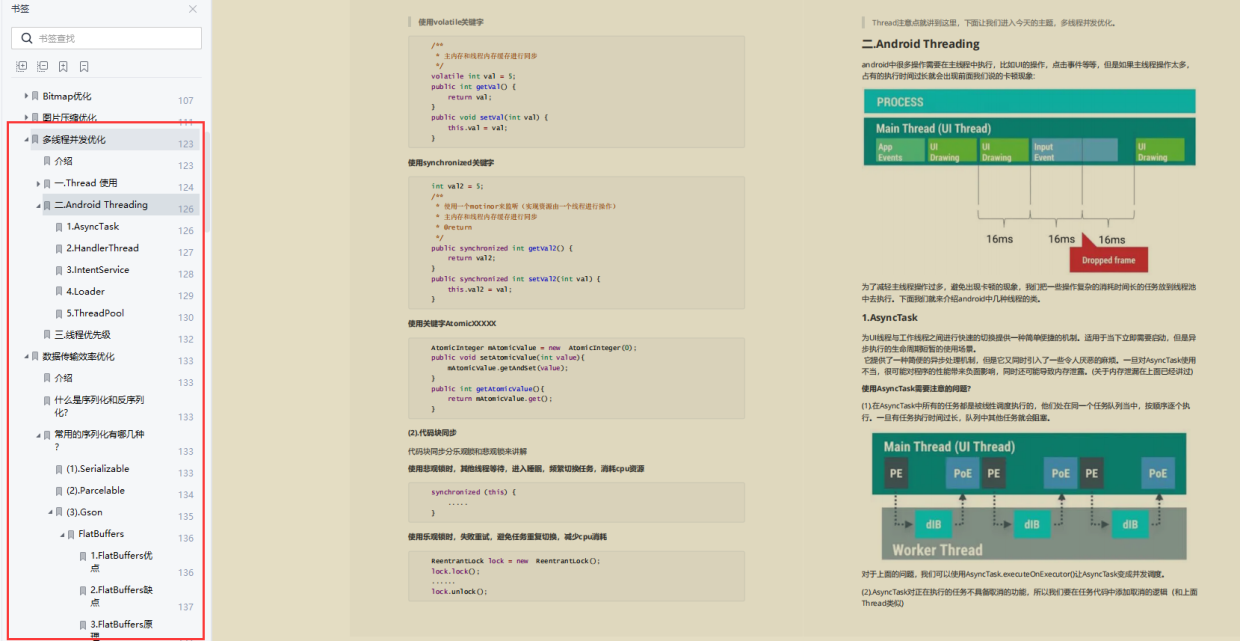
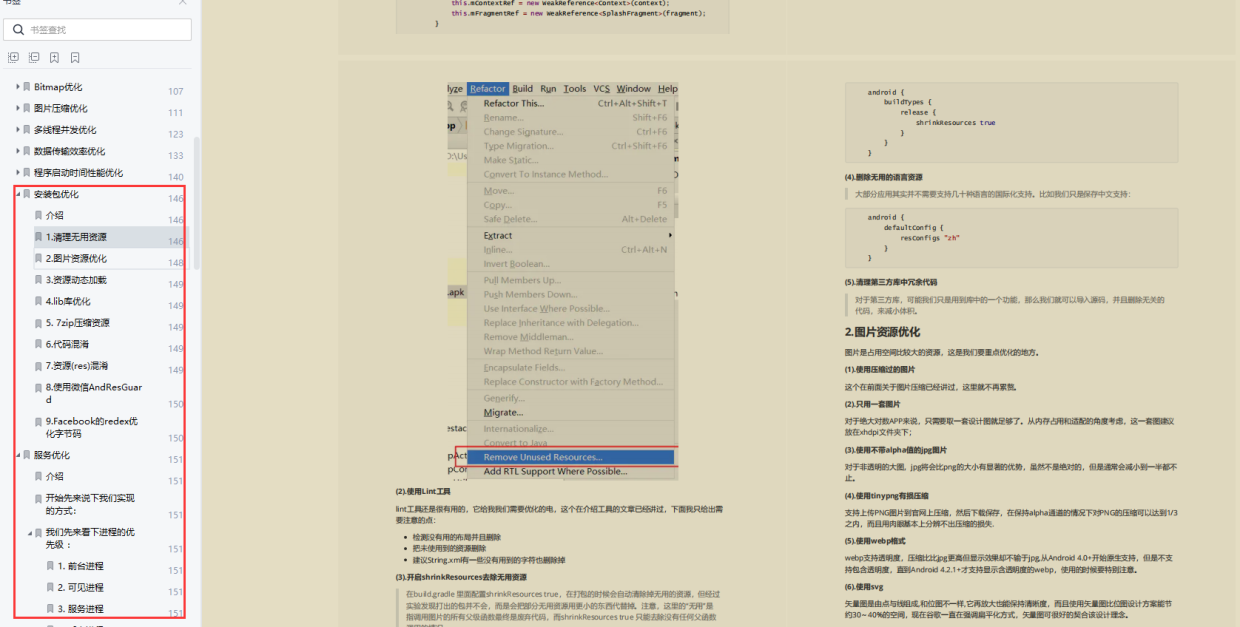
"Android Performance Monitoring Framework":https://qr18.cn/FVlo89

"Android Framework Learning Manual":https://qr18.cn/AQpN4J
- Boot Init process
- Start the Zygote process at boot
- Start the SystemServer process at boot
- Binder driver
- AMS startup process
- The startup process of the PMS
- Launcher's startup process
- The four major components of Android
- Android system service - distribution process of Input event
- Android underlying rendering-screen refresh mechanism source code analysis
- Android source code analysis in practice
